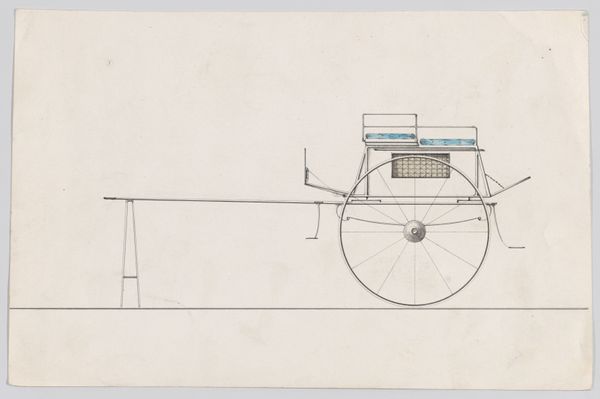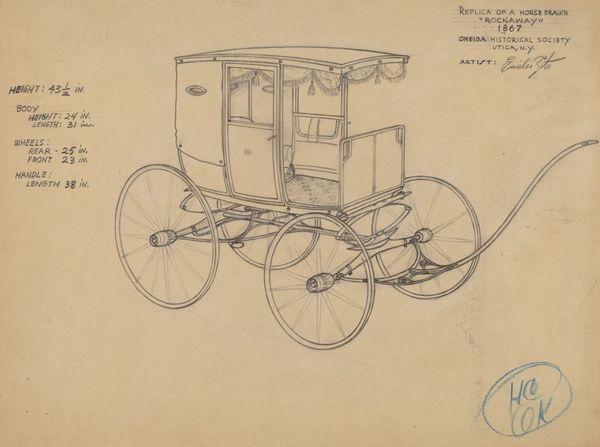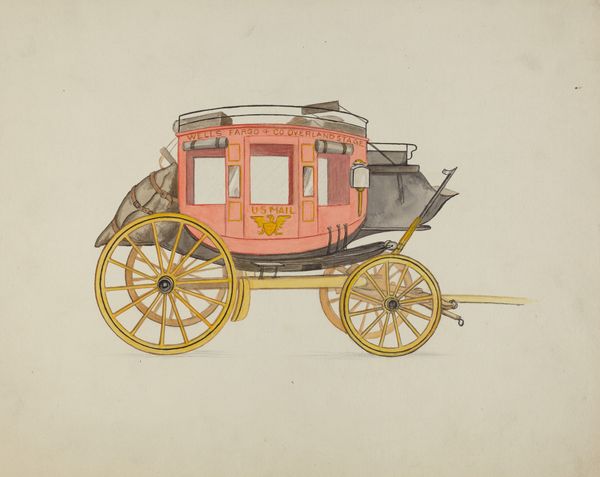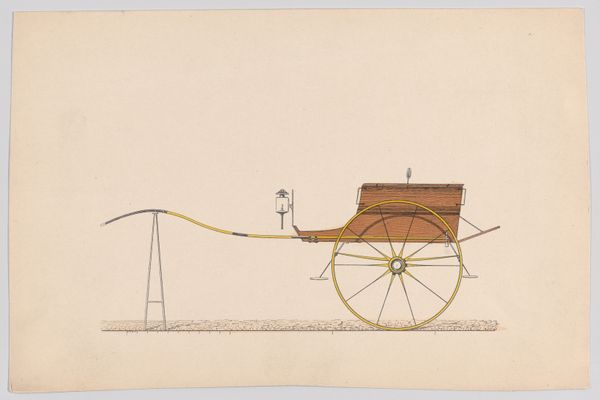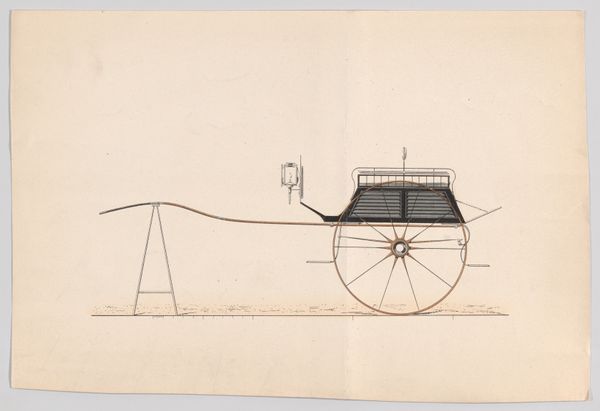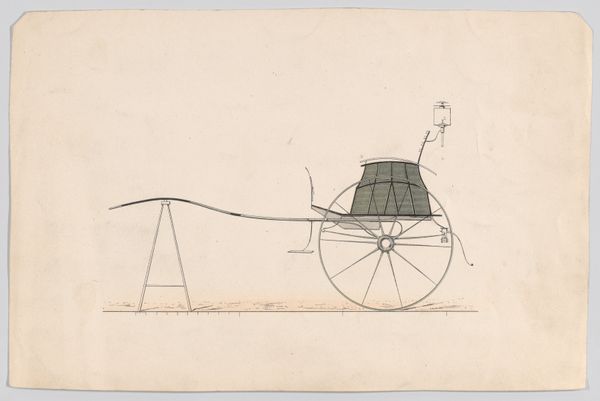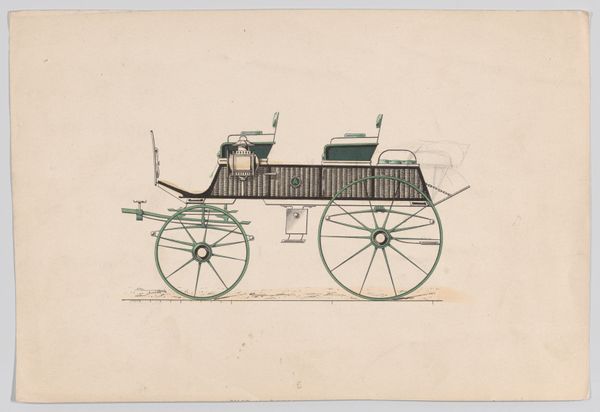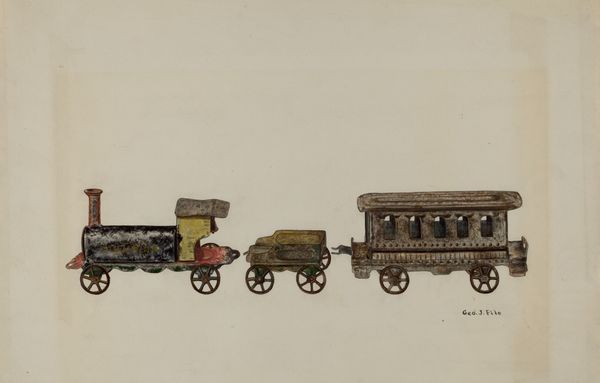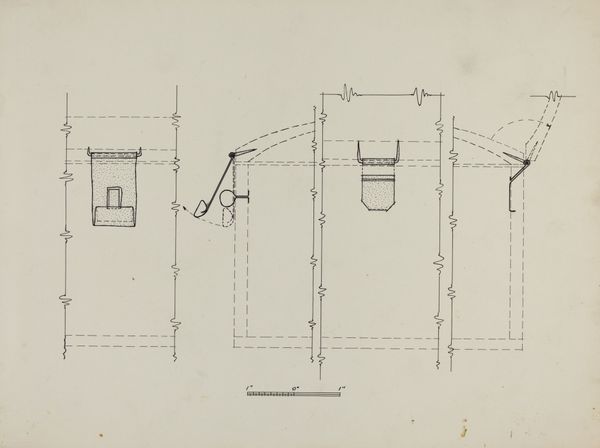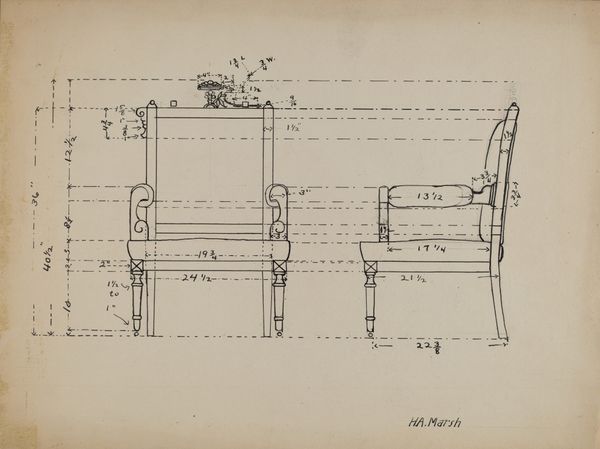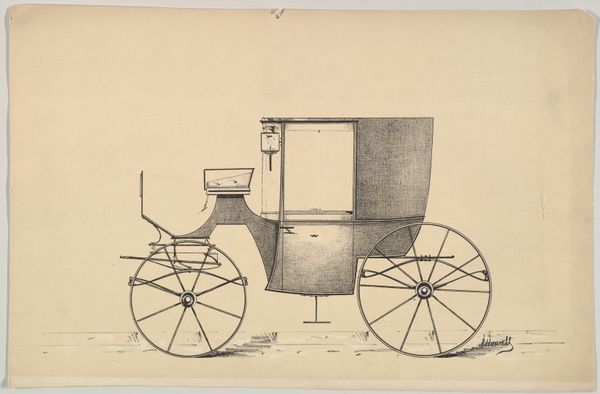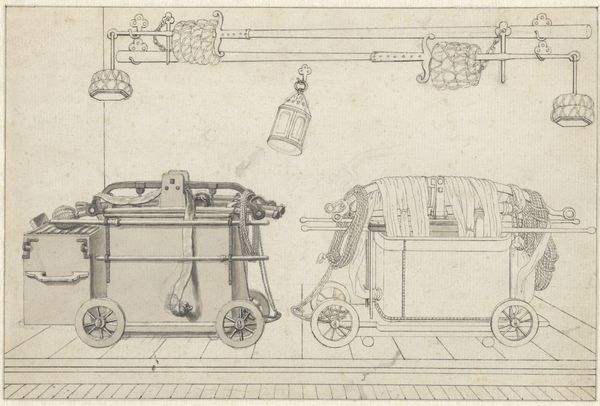
drawing, pencil
#
drawing
#
aged paper
#
toned paper
#
light pencil work
#
quirky sketch
#
sketch book
#
personal sketchbook
#
sketchwork
#
geometric
#
pencil
#
sketchbook drawing
#
cityscape
#
storyboard and sketchbook work
#
sketchbook art
Dimensions: overall: 22.8 x 29.2 cm (9 x 11 1/2 in.)
Copyright: National Gallery of Art: CC0 1.0
Editor: So, here we have a drawing titled "Street Car," likely created between 1935 and 1942. It seems to be pencil on toned paper. There's something almost whimsical about it, despite the industrial subject. What strikes you about this piece? Curator: What I find fascinating is the depiction of technology and labor. Look at the hand-drawn quality, the obvious process. This isn't a slick, mass-produced image; it's an individual's interpretation and creation. Consider also, the drawing style: it presents this kind of futuristic, or perhaps even fantastical, technology through a rudimentary means – pencil on paper. What does this suggest about the consumption of progress or technological innovation at this time? Editor: That's a really interesting point. It almost feels like a prototype, a dream of transit rather than a functional design. Do you think the limitations of the medium—pencil, sketchbook—impact how we should understand the intent behind it? Curator: Absolutely. The sketchbook itself suggests a kind of intimacy and a direct connection to the artist's hand and mind. The choice of such humble materials challenges the preciousness often associated with ‘fine art.’ What’s interesting to consider is how everyday materials shape artistic vision and vice-versa, offering insights into the society and era that produced them. Editor: So it's not just about *what* is depicted, but *how* it’s depicted, telling us something about the artist’s world and maybe even their relationship to technology? Curator: Precisely! By emphasizing the material conditions of its making, we move beyond just appreciating the subject matter and start considering the labor, the context, and the social forces that shaped this 'Street Car.' Editor: That makes me appreciate the piece even more. I hadn’t thought about it beyond just the visual. Curator: Exactly, analyzing materials offers us unique angles of observation, going beyond face value to offer insight to an artist’s social environment and their interaction with industry!
Comments
No comments
Be the first to comment and join the conversation on the ultimate creative platform.
